Genre: Sports Developer: Sega of Japan Publisher: Sega of Japan Players: 1-2 Released: 1992
Animation 21’s Honoo no Doukyuuji Dojji Danpei was a short-lived Japanese animation series which aired 47 episodes between 1991 and 1992. Its story centers around a 10-year-old kid, Ichigeki Danpei, a dodgeball prodigy who takes on professional high school dodgeball players. I’ve not seen the series, which has not been released in the West yet, nor can I determine how faithful this Mega Drive game is to the show. As with most games inspired by cartoon shows, the quality of the game is independent of the source. Thus, while I don’t see that detracting from my ability to play and review this game, be advised that I am ignorant of the show and its native language, so consider that a small warning before heading into this review.
I am, however, a huge dodgeball game fan, and it is a relief to see Dodgeball Danpei playing very much like Super Dodge Ball, the Western version of the classic Nekketsu Koha Kunio-kun dodgeball game. You control a team of seven players with four in the center and three around the outer perimeter of the opponent’s court. Each player has a life meter, and, unlike most other dodgeball games, is swapped out for an outside teammate if available when his or her life meter is depleted. After your fourth player is knocked out, you’ll have no one to sub in, and you’ll be faced with an on-court disadvantage that will continue until you exhaust your last player. Before each match you can choose each player’s position on your team, which is useful as each player has his or her own unique strengths as far as movement, catching, passing, stamina, and such go.
Control is identical to Super Dodge Ball except this time you’ll find a third button to jump instead of having to press throw and pass together. When the opponent has the ball, the throw and pass buttons double as catch and duck to help your team evade the ball. Each player also comes packing a special move, which operates with an NFL game style kicking meter. You have to hold and release the ball at just the right moment to turn a fast thrown ball into a super move. This meter isn’t displayed on-screen during normal matches, but thankfully the game includes a practice mode with offense and defense drills to help learn the controls. The odd thing is that the meter allows you to release a super move without having to run and jump to build up speed, and in the end being able to unleash attacks from a dead stop unlike other games helps the game’s unpredictability, which is a good thing.
The super moves are varied and flashy enough to be useful but not overly so as in All-Star Slammin’ D-Ball. You’ll see balls turn into comets and axes, zigzag and loop-de-loop, and other odd touches which make dodging them more difficult. One of the neat touches here is that the force of the ball factors into catching it, so if you’ve positioned your player along the back line waiting for the attack to grab it, the force of the ball can push your player out of bounds. The super dodgeball shots aren’t as devastating as the super spikes in Super Spike V’Ball, however, and they are catchable but require much better timing and positioning to do so.
Far more difficult to avoid is when a team gangs up on you. Though the outside teammates are usually useless in most dodgeball games, lacking the speed and throws to do any real damage, here they can be used as a powerful special attack. The ball quickly is passed around the square along the edges until suddenly and unexpectedly one takes aim at the center, resulting in an instant kill should the ball hit. The constant dizzying movement make it difficult to ready yourself to defend, and the power is scary in that it can wipe out a strong player in a single blast, whereas even the better super moves will require two or three strikes to fully knock someone out.
The game is a lot of fun, especially with a second player. Though controlling seven people at the same time sounds overly complex, the action is easy to track since the ball will dictate who you control, and yours and the enemy’s player are always identified on-screen. Since the action stops once you’re in control, the game, you can force a breather in between the more hectic and sometimes stressful defensive periods. There really isn’t a better way to control this type of game and with these many players, and even years later modern dodgeball games such as Nijiiro Dodgeball on the PlayStation still use this control scheme. While the computer is a good and strong opponent, it never really exploits the somewhat unwieldy control which could handicap a human player.
The game offers a championship mode which (I assume) follows the show’s story via the cinema screens before and after each match. There’s also a nicely implemented six-team tournament, including the ability to map teams to the computer and choose whether you wish to watch the match. There are a nice number of real and unusual courts to battle on, and the 15 included teams, each with an individual roster, provide more than enough depth to keep things interesting for what otherwise is a simplistic arcade-style game. You won’t find Nijiiro Dodgeball style RPG elements here; there is no training mode nor anything you may expect to find in a Japanese sports title such as managerial segments, dating adventures, or unexplained sea fishing. If you would like to see an updated Super Dodge Ball for your Sega Genesis (or, in this case, Sega Mega Drive), then this is your game.
The graphics aren’t spectacular but get the job done. The players and special attacks animate well enough to be convincing, and the courts are detailed and colorful. Even if there’s no real advantage whether you’re playing in front of a Sphinx or under a bridge, the locale variety keeps things from looking repetitive. The color choices are attractive and look sharp, with each character design looking very much like an individual and not some cloned teammate filler. The screen stays focused on the action and displays enough of the court so that it never hinders on your reactions or causes you to lose track of what is going on the court.
The arcade style sound effects consist mainly of an assortment of laser sounds, buzzes, thuds, and just about whatever you’d expect to find in any early ’90s game’s sound test. On the other hand, the music is surprisingly good, with two dozen songs featuring light pop jingles mixed with some faster electronic rock tracks. While I find myself thoroughly enjoying listening to them, the tracks lack the great hook needed to make the songs memorable, the kind you find yourself humming unexpectedly. Still, the quality of the music and melodies make me wonder if the soundtrack is a result of the animation license.
Speaking of being an ignorant American playing a Japanese game, the game is very import friendly. While the inability to comprehend the conversations is a loss, the game and options are easy enough to figure out, either due to being in English or simple enough to trial and error. It doesn’t take much effort to learn to play or set up a tournament bracket, and with no adventure or RPG style elements, you don’t have to understand Japanese to enjoy everything the game has to offer. Honoo no Doukyuuji Dojji Danpei — or whatever it’s called; there are numerous romanization attempts of the title throughout the Internet – is a fun, arcade-style dodgeball game that fans of the genre and casual action and sports players will definitely enjoy. The controls are simple to grasp, the presentation is well done, and most importantly the game is lots of fun. There’s no reason to let the language barrier stop you from enjoying a great game of dodgeball on your Genesis.
SCORE: 8 out of 10

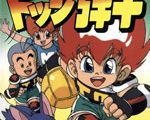
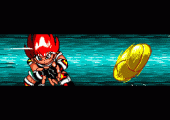
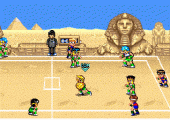
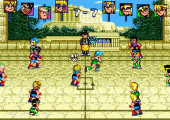
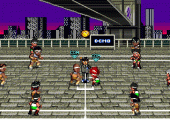
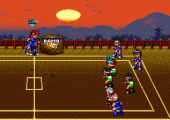
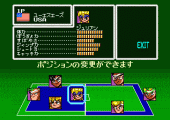
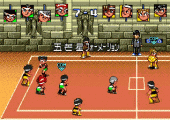
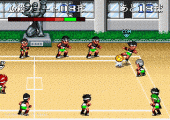
Recent Comments